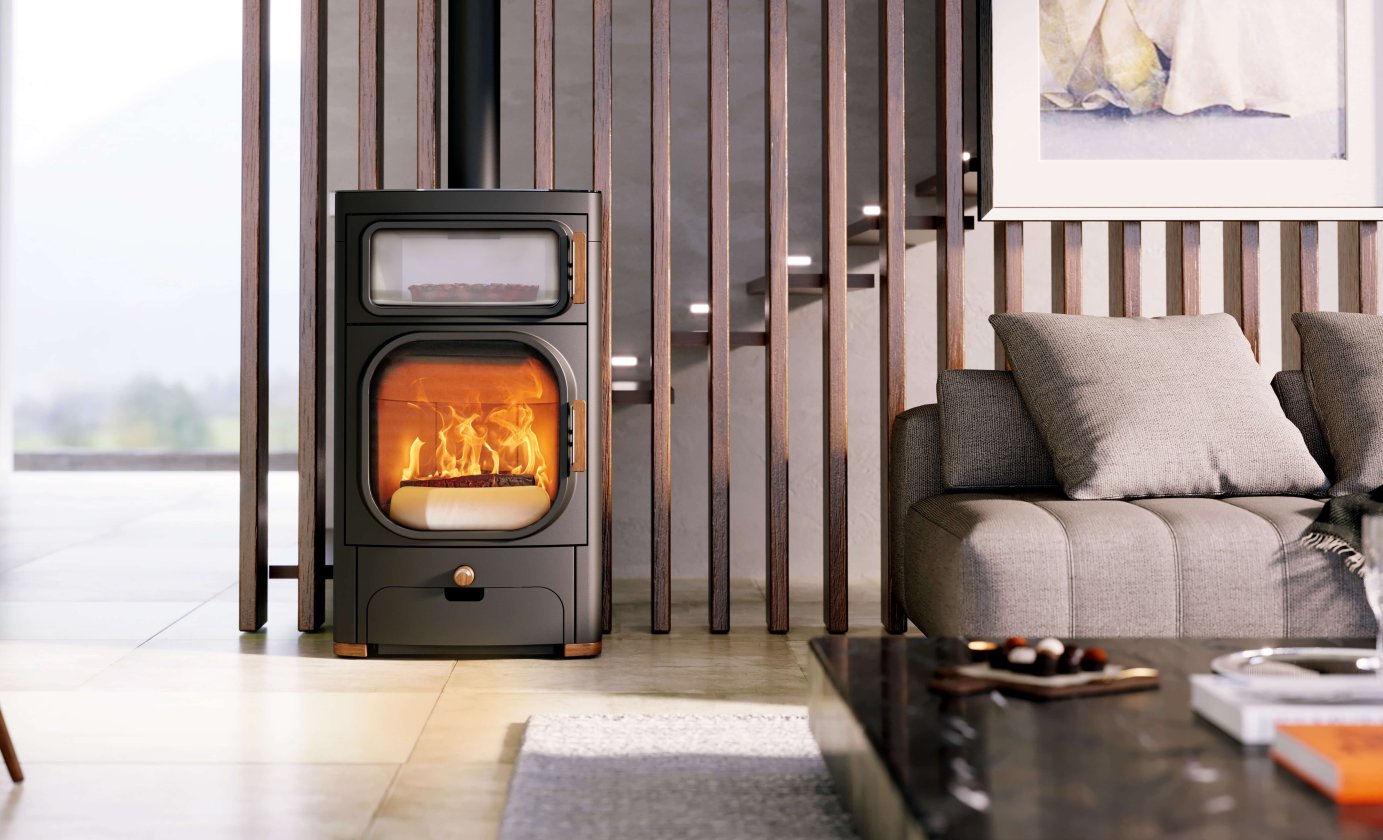Crisis-proof heating with wood
Good for the environment and the wallet

Whether it’s pandemic, unpredictable weather or the threat of blackouts, many people wish they were independent of global supply chains and fossil energies. Heating with wood is the solution. It enables individual freedom of action and is a sustainable heat source

Wood, the native heat dispenser
To heat homes with oil and gas, the fuels must for the most part be imported from abroad. The biggest oil producers include the USA, Saudi Arabia and Russia. Natural gas is mainly extracted in the USA, Russia and Iran. The earth’s dwindling oil- and gas reserves, economic changes and political discussions are sometimes responsible for severe price oscillations and supply bottlenecks.
By way of contrast, wood is a renewable raw material that appears in large quantities in native forests. With a modern wood stove its owners are also independent of environmental impacts and heating failures.

CO2 neutral and cost-effective
Like sun, wind and water, wood also belongs to the renewable energy sources. Burning wood releases the same quantity of CO2 that the tree has already consumed during its growth. The same amount of CO2 would also be released during the process of natural decay in the forest. The resulting carbon dioxide is absorbed by the trees that are growing again, creating a closed cycle. Apart from transportation, heating with wood is therefore CO2-neutral. In comparison: A 120 m² household that exclusively uses oil or natural gas for heating generates more than 3 tonnes of CO2 a year (source: CO2calculator from the Environmental Federal Office).
In contrast to fossil fuels, wood is therefore exempt from the CO2 tax. Wood is therefore a climate-friendly and at the same time cost-effective method of heating.
Storing wood correctly
Heating with wood is a crisis-proof alternative to oil and natural gas. To be ready for any eventuality it is advisable to lay up an appropriate supply at home. As dry wood has a higher useful output and therefore heats for longer, the correct storage of wood is particularly important. Under the right conditions, wood can be stored for up to five years.
- Firewood should be stored outdoors. In the garage or cellar, wood can suffer from mildew due to poor or absent air circulation. The south or west side of a house, for example, is well suited, since sun and wood can have a free effect.
- The wood should not be stored on the floor or directly against the wall of the house. Waterlogging and moisture quickly cause mildew and make the wood unusable.
- There should also be a few centimetres space between the individual pieces of firewood. This lets the air circulate well and the wood remain dry.
- The wood should absolutely be protected against damp. Moist or even wet wood burns poorly, generates little heat and produces a lot of smoke. Therefore the wood should be stored under roofing.
- The daily requirement of wood should be kept indoors. This way the pieces of firewood can acclimatise and dry out. Kept in an attractive place, such as the Clou “Wood Box“, firewood becomes a decorative element.


